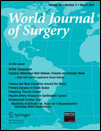Long-term Results with the Modified Sugiura Procedure for the Management of Variceal Bleeding: Standing the Test of Time in the Treatment of Bleeding Esophageal Varices
Abstract
Background
The surgical approaches to the treatment of bleeding esophageal varices in cirrhotic patients have been reduced since the clinical development of endoscopic sclerotherapy, transjugular intrahepatic portosystemic shunt (TIPS), and liver transplantation. However, when acute sclerotherapy fails, and in cases where no further treatment is accessible, emergency surgery may be life saving. In the present study we retrospectively analyzed the results of the modified Sugiura procedure, performed as emergency and semi-elective treatment in the patient with bleeding esophageal varices.
Methods
Ninety patients with cirrhosis and portal hypertension were managed in our department for variceal esophageal bleeding between January 1985 and December 1992. The modified Sugiura procedure was performed in 46 patients on an emergency (25 patients) or semi-elective (21 patients) basis. Liver cirrhosis stage according to Child classification was A in 4 patients, B in 16 patients, and C in 26 patients.
Results
Acute bleeding was controlled in all patients. Postoperative mortality was 23.9% (11 of 46 patients). The mortality rate was 34.6% in Child class C patients (9 of 26 patients), and 12.5% in Child class B patients (2 of 16 patients). Twenty-four patients had long-term follow-up extending from 14 months to 22 years (mean 83.1 months). Ten of 24 patients (41.6%) did not develop rebleeding for 5–22 years (mean 10.3 years). Overall 5-year survival in these 24 patients was 62.5%.
Conclusions
The modified Sugiura procedure remains an effective rescue therapy for patients with bleeding esophageal varices when alternative treatments fail or are not indicated. Moreover, it can be a life-saving procedure in patients with anatomy unsuitable for shunt surgery or for patients treated in nonspecialized centers where surgical expertise for a shunt operation is not available.




